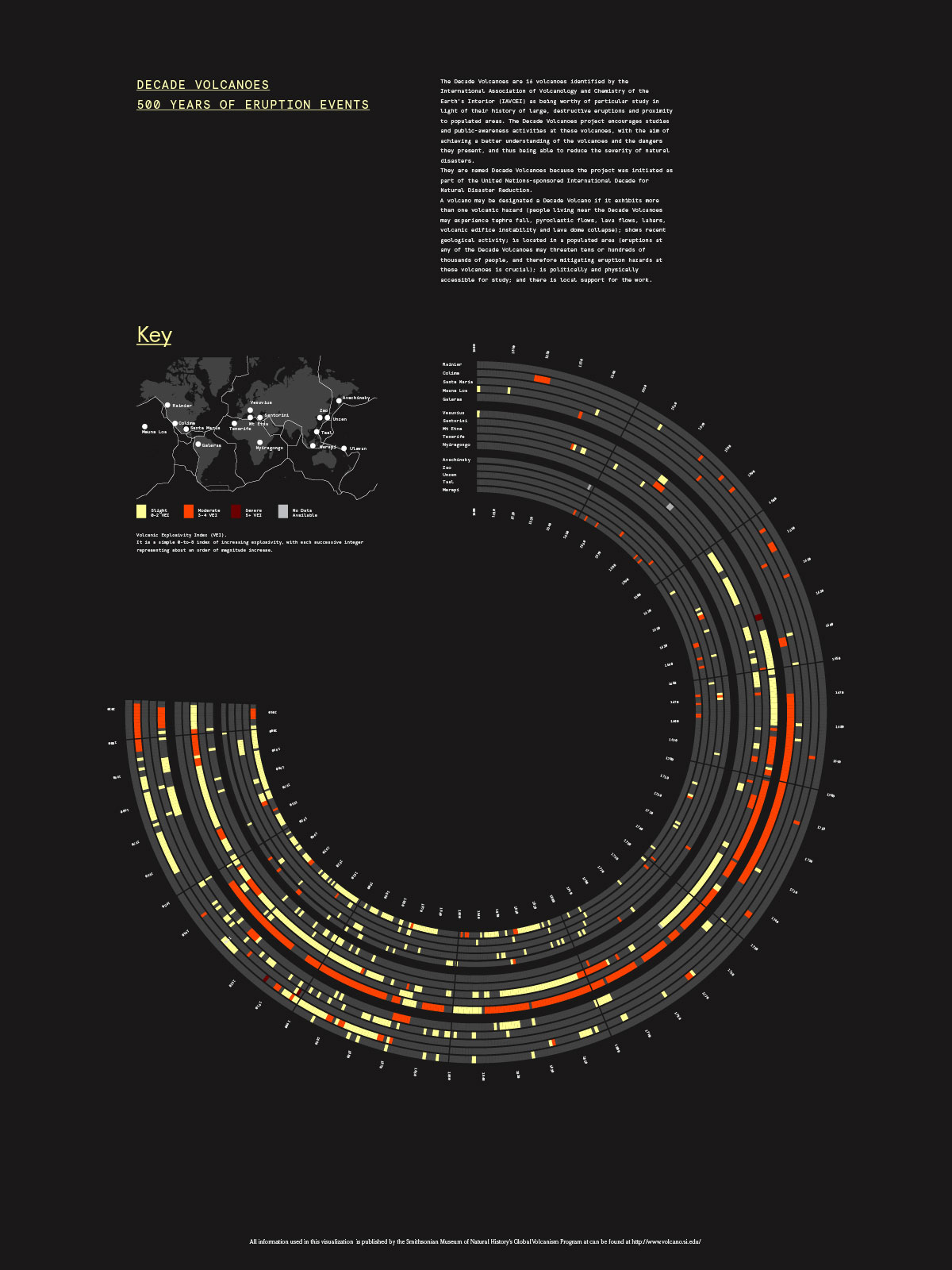My body of work includes projects for The Vilcek Foundation, GE, The Ecuadorian President's Office, Samsung, and Kimberly Clark. I have had the pleasure of working for Pentagram, VSA Partners, Gravitytank, Designkitchen and Sol Sender.
Expertise
Information design, user interface, brand identity, typography, web design, experience design, concept development, editorial design, prototyping.
Education
Master of Fine Arts in Graphic Design
Maryland Institute College of Art
2011-2013
Bachelor of Fine Arts in Visual Communication
The School of the Art Institute
of Chicago
2010
Professional Experience
Information Design Contractor
Pentagram :: Abbott Miller
07.11– Present
Various information design projects ranging from data visualization, storytelling, and way-finding systems for various cultural clients.
Interaction Design Intern
VSA Partners
06.12– 08.12
Various interaction design & web development projects for various corporate and cultural clients. Prototype, ideation and business pitches for prospective clients.
Communication Design Fellow
Gravitytank
06.10– 06.11
User centered design ranging from user research, identity, prototyping, information, user interaction and interface design.
Graphic Designer & Assistant
Sol Sender
05.09– 01.11
Research, concept development, research and deployment of brand systems for diverse clients.
Web Designer
Designkitchen
02.10– 05.10
Brand identity, digital and web development for various clients in their digital capabilities.
Teaching Experience
Typography II
Maryland Institute College of Art
2013
Assigned a user interface project, assisted various software and material demonstrations in a variety of media and supported with other three projects. The class focused on building a complex set of skill-sets to get students ready to deploy typographic systems across different mediums.
Graphic Design I
Maryland Institute College of Art
2012
Students build their knowledge of Graphic Design by being introduced to principles of layout, hierarchy, composition and Gestalt.
Teaching intern for Brockett Horne.
Advanced Design Studio
Maryland Institute College of Art
2012
Senior-level course where students build their knowledge of design discourse and professional practice in the discipline through the ideation and execution of their individual senior project. Teaching intern for Jennifer Cole-Phillips.
Information Design
Chicago Portfolio School
2011
Students are exposed to principles of information design, research and basic formal mechanisms for the display of information. Students are challenged to display complex sets of information in a journalistic-manner in order to tell complex stories.
Decade volcanoes, a close look at the eruption cycles of the mayor active volcanoes in the planet.
The Decade Volcanoes are 16 volcanoes identified by the International Association of
Volcanology and Chemistry of the Earth's Interior (IAVCEI) as being worthy of particular
study in light of their history of large, destructive eruptions and proximity to populated
areas. The Decade Volcanoes project encourages studies and public-awareness activities at
these volcanoes, with the aim of achieving a better understanding of the volcanoes and
the dangers they present, and thus being able to reduce the severity of natural disasters.
They are named Decade Volcanoes because the project was initiated as part of the United
Nations-sponsored International Decade for Natural Disaster Reduction.
A volcano may be designated a Decade Volcano if it exhibits more than one volcanic
hazard (people living near the Decade Volcanoes may experience tephra fall, pyroclastic
flows, lava flows, lahars, volcanic edifice instability and lava dome collapse); shows recent
geological activity; is located in a populated area (eruptions at any of the Decade
Volcanoes may threaten tens or hundreds of thousands of people, and therefore mitigating
eruption hazards at these volcanoes is crucial); is politically and physically accessible for
study; and there is local support for the work.
All information used in this visualization is published by the Smithsonian Museum of Natural History’s Global Volcanism Program at can be found at http://www.volcano.si.edu/
Download pdf
year completed
2013
team members
x1
skills
information design

After analyzing the frequency of eruption for each volcano, it is clear that in the past 200 years the activity of volcanoes located in Europe has increased.
Process finds
These are some interesting forms found along the way.
